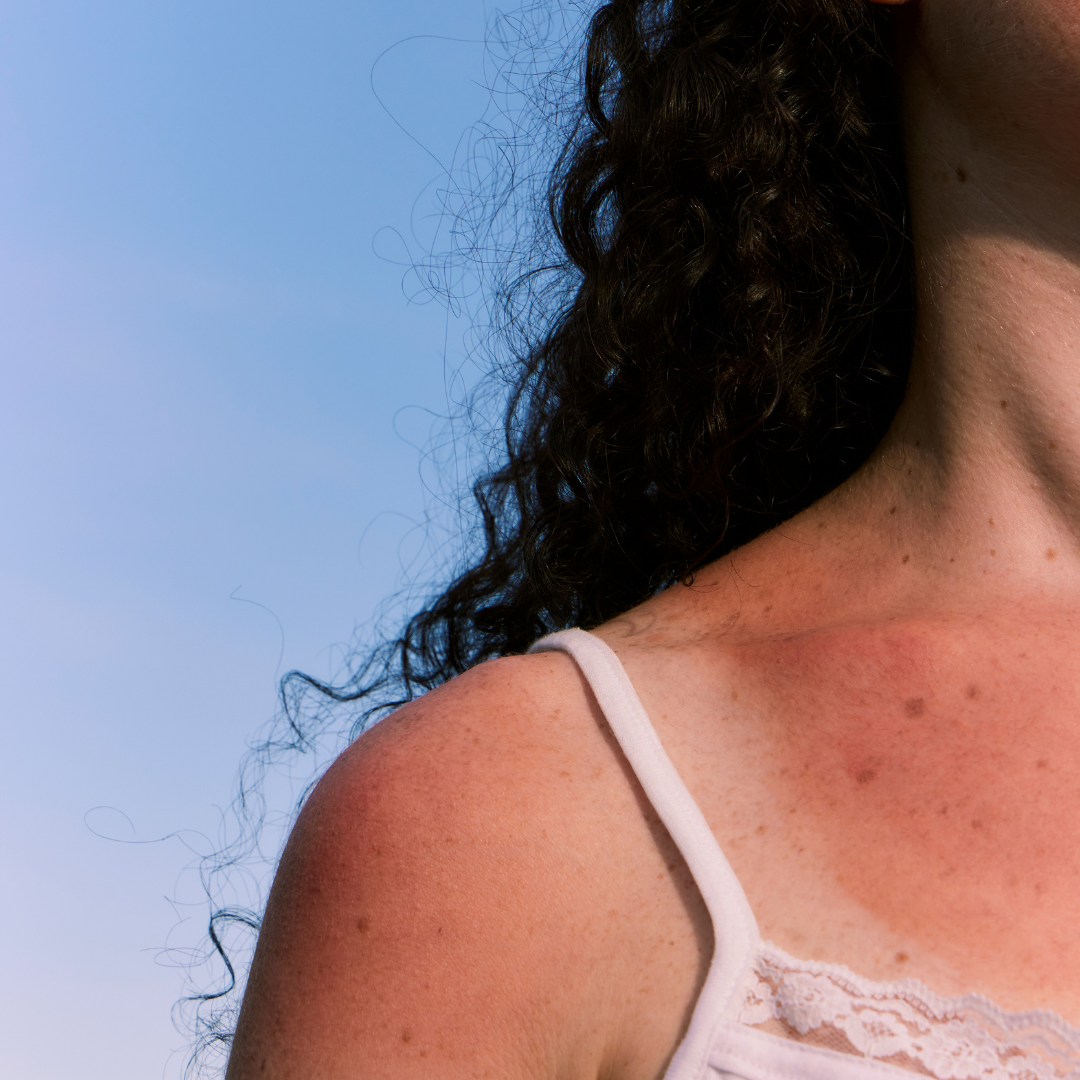
Best sunburn relief for your teen
What really helps and what to avoid

Quick summary
- Mild sunburn usually heals within a week, but serious symptoms like blisters, fever or dizziness need urgent medical attention
- Help your teen recover by keeping them cool, hydrated and using aftersun, while avoiding ice directly on skin, tight clothes or popping blisters
- Encourage sun safety habits like sunscreen, hats and shade to protect their skin and prevent long-term damage
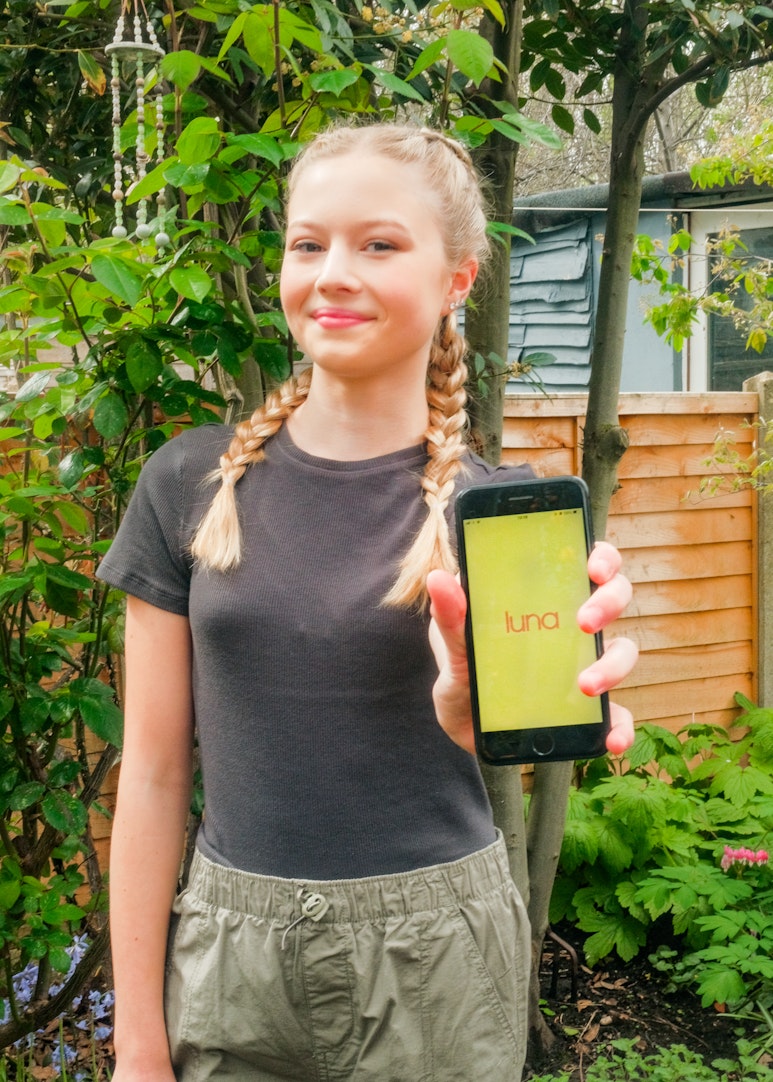
When teens spend long days outside – whether at the park, on holiday, or hanging out with friends – sunburn can happen before they even realise.
Even on cloudy days, UV rays can damage the skin and leave it hot, sore and peeling for days.
If you’re looking for the best sunburn relief for your teen, here’s a simple guide to treating mild sunburn at home, knowing when it’s more serious, and helping them avoid it in future.
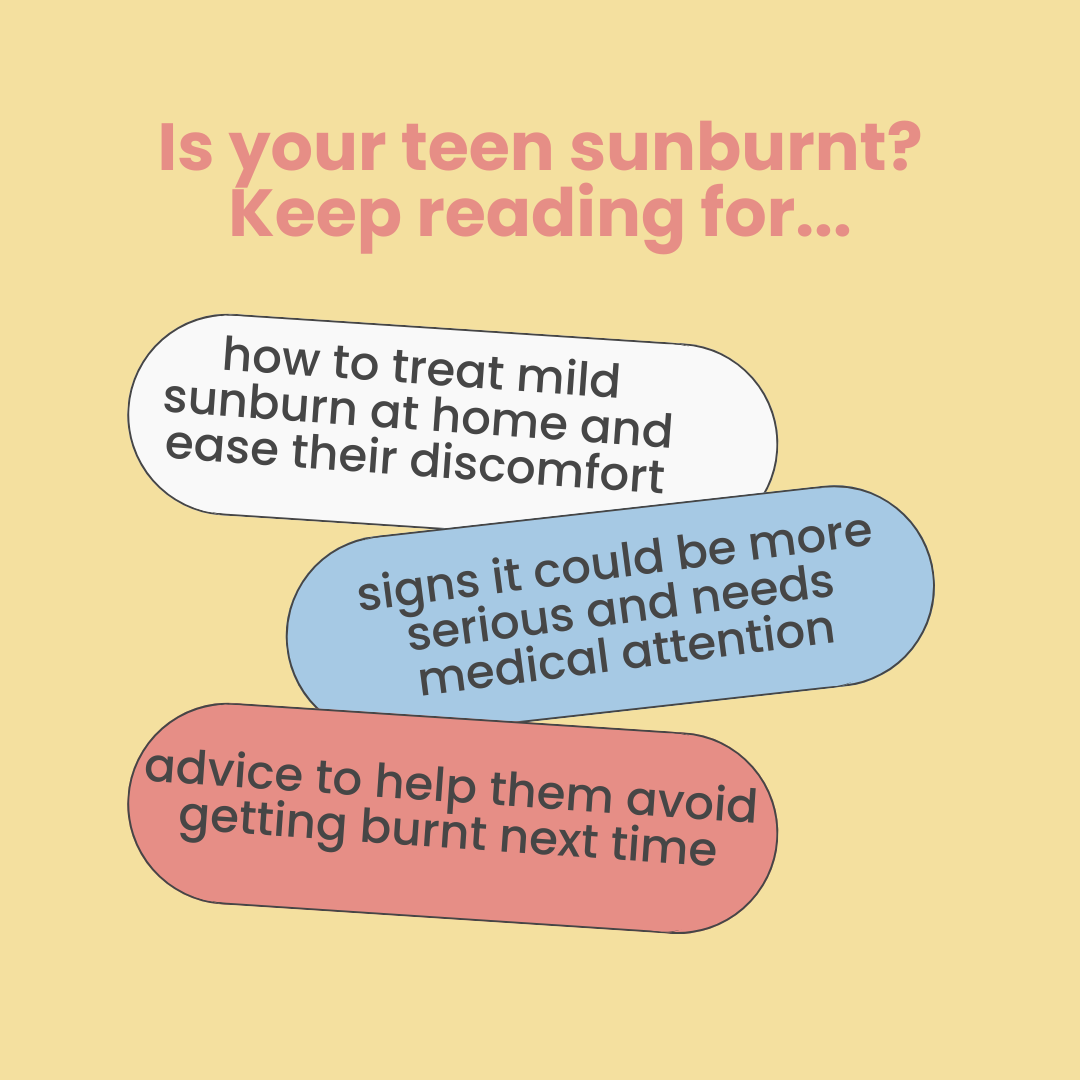
What is sunburn?
Sunburn is a painful skin reaction caused by too much ultraviolet (UV) radiation from the sun.
It can happen to anyone – even on overcast days or when UV rays reflect off water, sand or buildings
Mild sunburn usually heals within about a week, and may flake or peel after a few days.
Tanning is also a sign of sun damage, even though it might not hurt straight away
While teens with lighter skin tend to burn more quickly, darker skin tones can burn too.
Although the redness may not be as noticeable, skin can still feel hot, sore and uncomfortable.
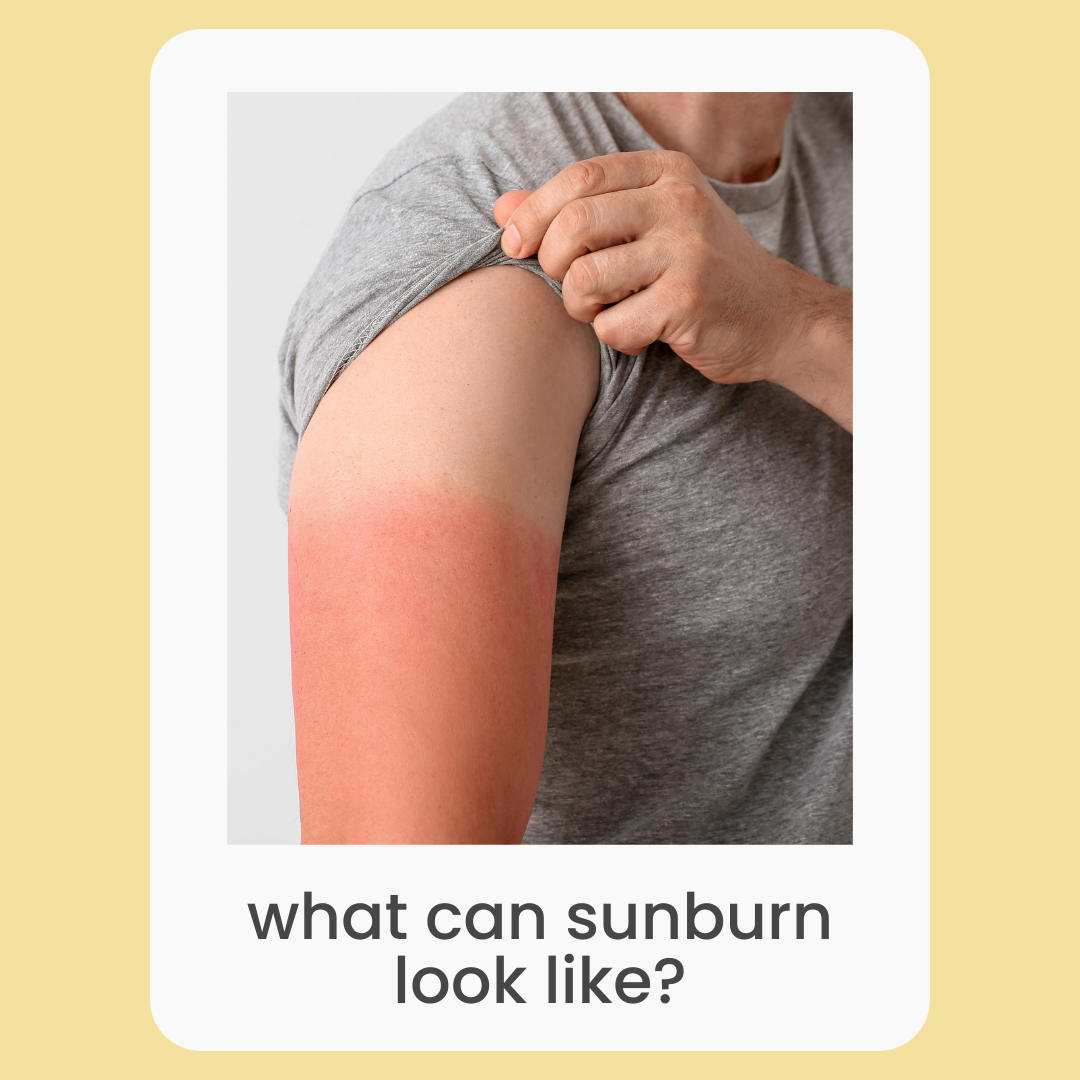
Sunburn symptoms to look out for
Knowing the signs of mild versus severe sunburn can help you decide what kind of care your teen needs.
Mild sunburn symptoms:
- Red or pink skin on lighter tones, or warm and sore skin on darker tones
- Skin that feels hot, tight or stings to the touch
- Dry, itchy or peeling skin after a few days
Severe sunburn symptoms:
- Large blisters or swelling
Intense pain that doesn’t improve - Feeling dizzy, nauseous, feverish, or unusually sleepy
- Chills, shivering, headache or muscle cramps
If your teen has any severe symptoms, or seems very unwell, contact your doctor, or in the UK, call NHS 111 for further advice.
Severe sunburn can lead to heat exhaustion or heatstroke, which can be very serious.
Best sunburn relief for teens at home
Most mild sunburn can be treated at home with a few simple steps.
You might want to help your teen:
- Get out of the sun straight away and stay indoors or in the shade while the skin heals
- Cool the skin gently with a lukewarm or cool (not cold) shower, bath, or a clean damp towel – avoid using ice directly on the skin
- Use aftersun cream or aloe vera gel to soothe tight, sore skin – do a test first on a small area of skin e.g. behind the ear or on the underside of the arm in case of irritation
- Drink plenty of water to stay hydrated
- Take painkillers if needed, such as paracetamol or ibuprofen (following the pack instructions)
- Wear loose clothing and keep sunburnt areas covered from direct sunlight until fully healed
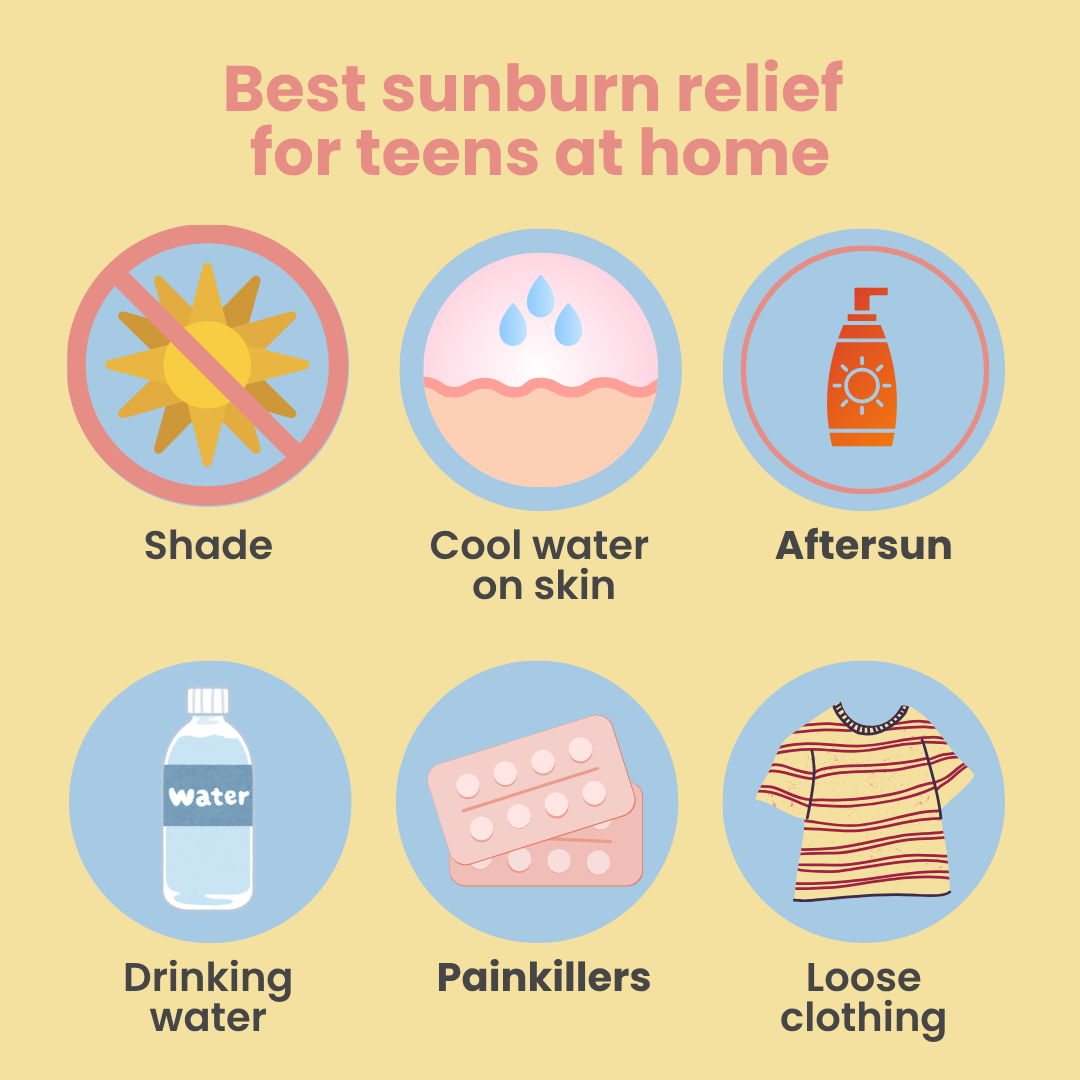
Dos and don’ts for sunburn relief
Here’s a quick checklist of what to do – and what to avoid – when your teen has sunburn
✅ Do:
- Get them out of the sun and keep them cool
- Apply aftersun cream, aloe vera gel or moisturiser
- Offer pain relief if needed
- Encourage them to drink plenty of water
- Leave blisters alone – don’t pop or burst them – they act as a natural barrier while healing
🚫 Don’t:
- Use petroleum jelly or greasy ointments
- Put ice or ice packs directly on sunburnt skin
- Pop blisters
- Scratch or peel flaking skin
- Wear tight-fitting clothes over the affected area
A pharmacist can suggest suitable products to help with sunburn, and can also advise if your teen needs to see a doctor. This might be needed if blisters are large, weepy or infected.
When to seek urgent medical help for sunburn
Sometimes sunburn is more serious. Call your doctor or NHS 111 in the UK if your teen:
- has skin that’s blistered or very swollen
- has a high temperature, feels hot and shivery
- feels very tired, dizzy, or sick
- has a headache and muscle cramps
These could be signs of heat exhaustion or heatstroke, which need prompt medical attention.
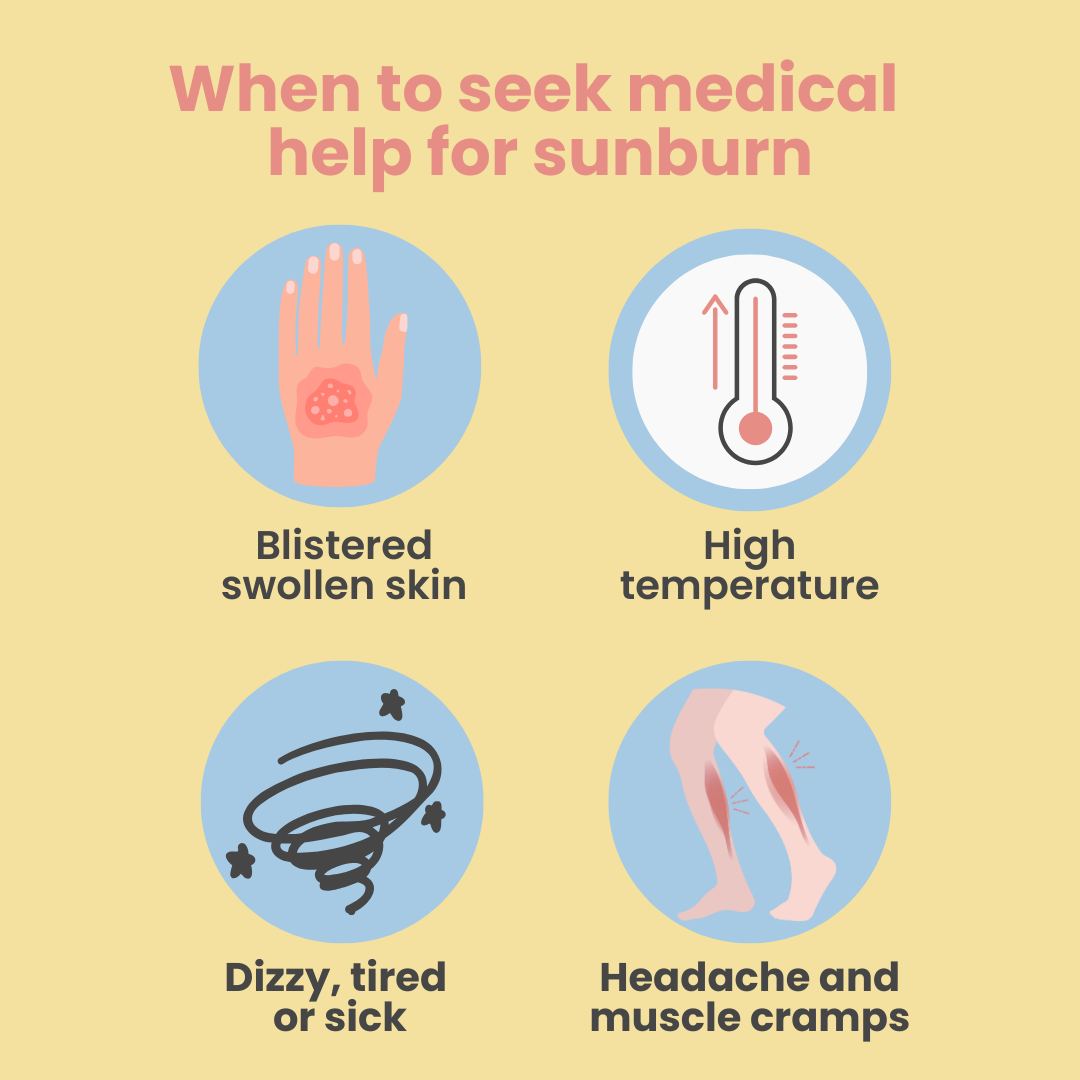
How to prevent sunburn in the future
One of the best ways to avoid painful burns is to encourage sun protection habits.
You could gently remind your teen to:
- Slip on clothing: long sleeves and a wide-brimmed hat help cover up
- Slop on sunscreen: broad-spectrum SPF 30+ or higher, applied generously 20 minutes before going out and every 2 hours after
- Seek shade: especially between 11am and 3pm when UV rays are strongest
- Slide on sunglasses: to protect their eyes
Sunburn isn’t just uncomfortable, it also increases the risk of skin cancer later in life.
Being a role model for sun safety yourself can help them see it as normal.
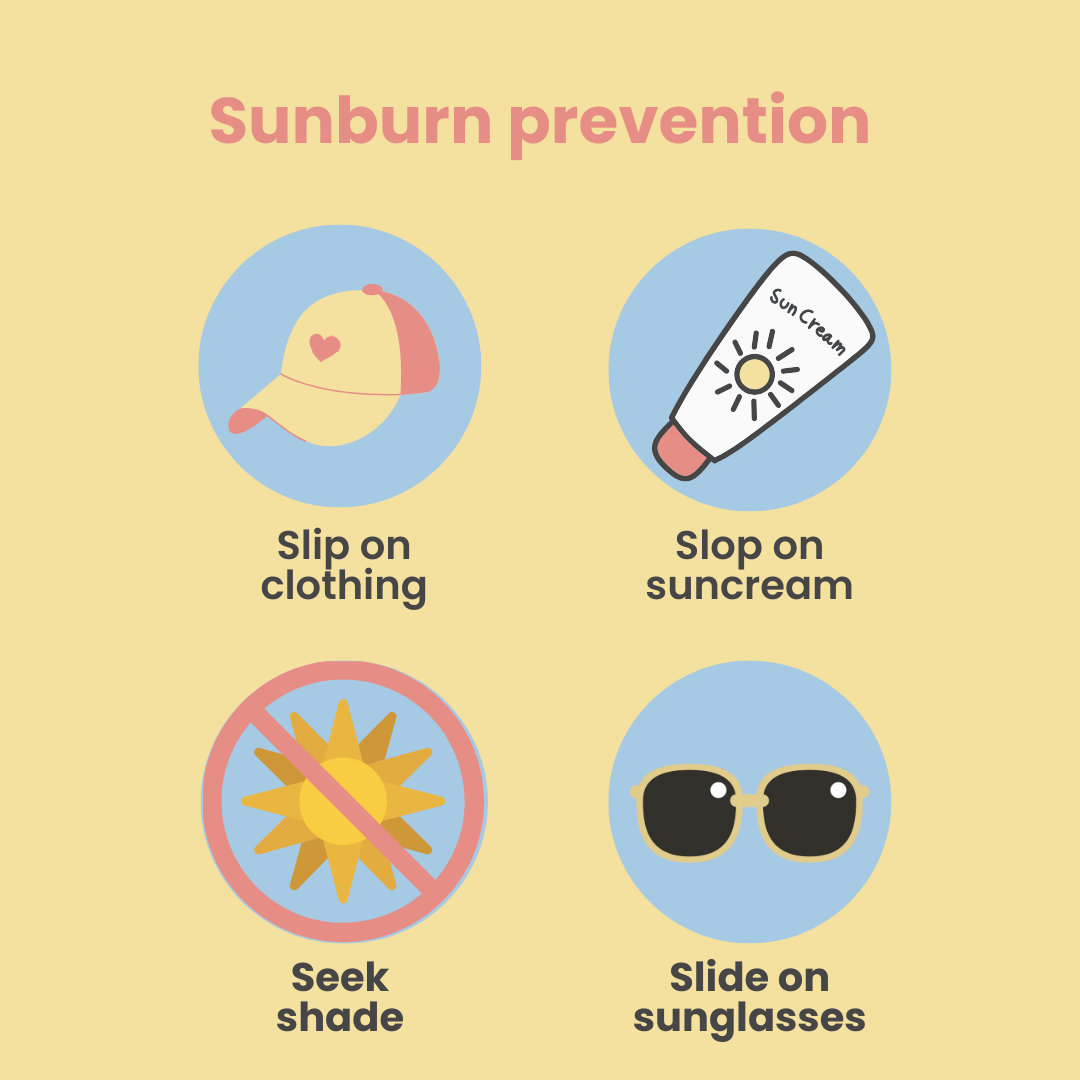
Why knowing about sunburn relief matters
Sunburn can feel like “just a classic part of summer,” but even one bad burn causes lasting skin damage.
Helping your teen recover and encouraging good habits now can protect their health for years to come, and help them feel more comfortable while they heal.
And if nothing else, they’ll probably appreciate having someone there who knows how to make it sting a little less!
How we created this article:
luna's team of experts comprises GPs, Dermatologists, Safeguarding Leads and Junior Doctors as well as Medical Students with specialised interests in paediatric care, mental health and gynaecology. All articles are created by experts, and reviewed by a member of luna's senior review team.
Sources:
Raising Children "Sunburn" | Accessed 09.07.25
https://raisingchildren.net.au/guides/a-z-health-reference/sunburnNHS "Sunburn" | Accessed 09.07.25
https://www.nhs.uk/conditions/sunburn/We'd love to keep in touch!
Sign up to our parent newsletter for emails on the latest teen trends, insights into our luna community and to keep up to date
By signing up, you are agreeing that we can use your email address to market to you. You can unsubscribe from marketing emails at any time by using the link in our emails. For more information, please review our privacy statement.